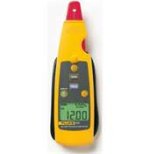Disadvantages of 0-10Vdc:
A field instrument using a voltage signal output is by nature a 3 or 4 wire device, requiring a 3rd or 4th wire for its power; compared to a 2 wire loop powered 4-20mA field instrument that derives its power from the signal wires.
Current signals are immune to minor resistance changes (rusty terminal screws) in long distance cabling, whereas a voltage signal loses some of its signal over any resistance.
Getting 10V out of milliamp current signals requires a higher burden resistor to convert the current to voltage, which can push the limit of the current driver, as opposed to 5V or 1V
0-10Vdc lacks a live zero which is an indication of a broken or open circuit. 1-5V, or 2-10V does have a live zero.
A current signal can be converted to a voltage with a suitable resistor, but a voltage signal requires a signal conditioner to convert to a current signal.
The 4-20mA current signal can carry the HART protocol for smart communications (setup/diagnostics/multiple variables). 0-10Vdc can't.
0-10Vdc as an output can not drive conventional devices like 2 wire valve positioners which derive the power to operate from the signal line itself.
The nature of intrinsic safety that requires a barrier lends itself to a current signal, less so to a voltage signal.
The corresponding input or output does not take 0-10Vdc
Advantages of 0-10V:
0-10Vdc shows less noise than lower dc ranges, like millivolt signals, because its signal is larger in the signal to noise ratio.
Voltage signals are monitored more easily in troubleshooting situations because the measurement can be made without breaking the circuit, which the requirement to put the meter in series in the circuit, as a 4-20mA current signal requires.
The concept of 'splitting" a voltage signal by paralleling it is more easily understood by Bubba than putting two devices in series for a current signal.
It's the signal that's available for use.





